

— Blogs —
—Products—
 Consumer hotline +8618073152920
Consumer hotline +8618073152920 WhatsApp:+8615367865107
Address:Room 102, District D, Houhu Industrial Park, Yuelu District, Changsha City, Hunan Province, China
Product knowledge
Time:2025-11-26 21:17:06 Popularity:77
The insect pest forecasting lamp is an intelligent agricultural device that uses the phototaxis principle of insects to attract, trap, monitor, and upload pest data in real time. It is widely used in agricultural plant protection stations, scientific research institutions, and modern farms.
The solar insect killer lamp focuses on physical pest elimination, using specific light wavelengths to attract insects and high-voltage electric grids to kill them instantly, significantly reducing field pest density. It is a key component of green agricultural pest control systems.
When combined, they form a complete “monitoring → early warning → control” chain, providing data support and safety assurance for agricultural production.

Insects exhibit strong phototaxis in the wavelength range of 320–680 nm. The forecasting lamp uses targeted light sources to stimulate insect approach.
High-voltage grid ≥5000V instantly electrocutes insects upon contact, with lamp body design preventing arcing for enhanced safety and stability.
- Light control: Automatically turns on at night, off during the day
- Rain control: Stops during rain to protect equipment
- Time control: Programmable working hours at night
- Temperature control: Stops below 5°C, resumes above 5°C
Sensors detect trapped insects and transmit data in real-time to cloud platforms for pest trend prediction and decision support.
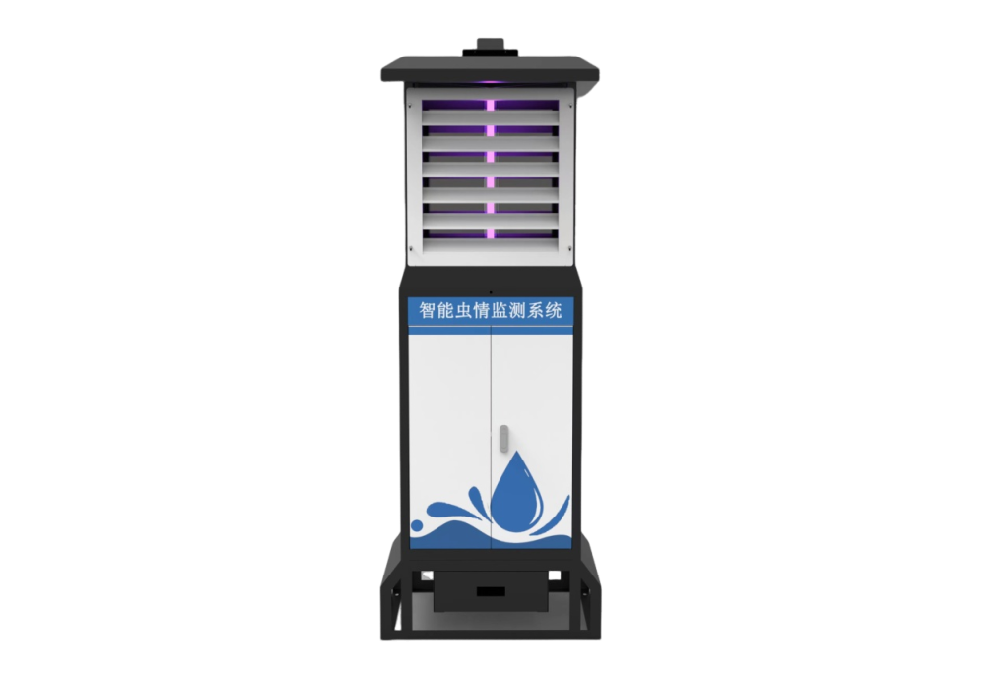
Power: 15W | Wavelength: 320–680 nm
Effective against: planthoppers, noctuids, diamondback moth, hawk moths, leaf miners, etc.
40W monocrystalline silicon solar panel
≥12Ah lithium battery
Service life: over 10 years
Voltage ≥5000V | Insulation resistance ≥2.5MΩ
Smooth, corrosion-resistant structure, excellent outdoor durability
Includes light/rain/time/temperature control, overcharge/over-discharge/overcurrent protection
Easy to clean regularly, maintaining long-term trapping and killing efficiency

1. Light-induced trapping
2. Insect count via sensor or photo recognition
3. Real-time cloud data transmission
4. Trend analysis for peak occurrence and migration patterns
5. Automated control recommendation generation
To ensure trapping range and data accuracy:
1. Install away from strong light sources (street lights, greenhouse supplemental lights)
2. Mounting height: ~2.7 meters above ground
3. Keep surrounding area open, avoid obstructions
4. Avoid locations near fish ponds or livestock sheds (high humidity)
5. Orient solar panels south-facing (in Northern Hemisphere) for maximum sunlight
1. Build foundation: Pour 400×400×500mm concrete base with embedded steel rebar
2. Fix the lamp body after concrete cures
3. Adjust solar panel orientation (north-south)
4. Test light/rain control functions
5. Routine maintenance: Clean grid, insect box, solar panel; check battery health
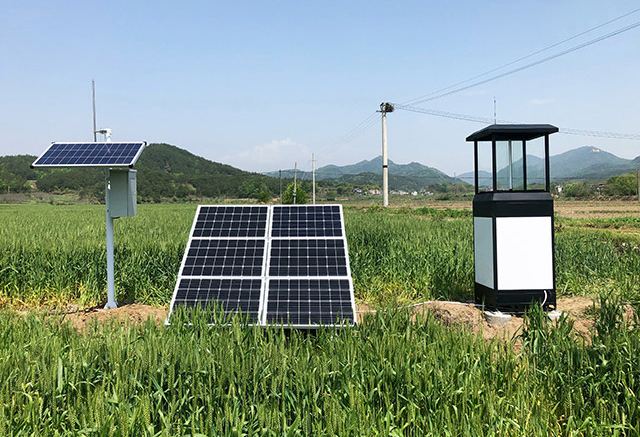
| Symptom | Possible Cause | Solution |
| Lamp does not light | Insufficient light / low battery | Cover light sensor to test; check battery |
| No electric shock | Low voltage | Check battery or aging wiring |
| Very few insects trapped | Poor installation location | Check for light interference or obstructions |
| Works during rain | Rain sensor malfunction | Clean rain sensor surface |
| Poor solar charging | Dust on panel | Clean solar panel |
| Shuts off too early | Incorrect time setting | Reset time parameters |
| Arcing on grid | High humidity / dirty grid | Clean grid and check insulation |
| Insect box smells | Not cleaned in time | Empty regularly and keep dry |
| Flickering at night | Battery near deep discharge | Check battery health |
- Field crops: corn, wheat, rice, cotton, rapeseed
- Cash crops: tea plantations, orchards, vineyards, goji berry farms
- Vegetable bases: greenhouses, organic farming zones
- Research institutions: agricultural academies, plant protection stations
- Smart agriculture projects: IoT demonstration zones, baseline pest monitoring stations
- Rural revitalization projects: green prevention subsidies, pesticide reduction demonstration zones
- Large farms and cooperatives
- Migratory pest monitoring points (e.g., rice planthoppers, fall armyworm)
Smart Agriculture Integration
Links with IoT platforms for “real-time pest data + automatic warning + control suggestions”. Can integrate with plant protection drones for precise spraying.
| Need | Recommended Product | Notes |
| Real-time pest data required | NiuBoL Forecasting Lamp | Monitoring + early warning |
| Focus on physical killing | NiuBoL Solar Killer Lamp | Reduces pesticide use |
| Large-area field control | Combination of both | Monitoring + killing dual system |
| Off-grid areas | Solar Killer Lamp | 40W solar meets full power needs |
| Precision agriculture data | Forecasting Lamp + platform | Supports visual management |
| Limited budget | Basic killer lamp | Fast installation, wide coverage |
| Feature | NiuBoL Forecasting/Killer Lamp | Ordinary Killer Lamp |
| Light/Rain/Time/Temp Control | Fully supported | Partially supported |
| Solar component lifespan | ≥10 years | 3–5 years |
| Attraction wavelength | 320–680nm full spectrum | Single band (~360nm) |
| Data monitoring | Supported (forecasting model) | Not supported |
| Protection functions | Overcharge/discharge/current | Limited |
| Grid voltage | ≥5000V | 2000–4000V |
| Protection rating | IPX5 | IPX3–4 |
| Maintenance cost | Low | Medium |
| Applicable scenarios | Research / large fields / IoT | Traditional farming |
| Item | Physical Control (Killer Lamp) | Chemical Pesticide Control |
| Safety | High, no residues | Low, possible residues |
| Ecological impact | Protects beneficial insects | Disrupts ecosystem |
| Cost | One-time investment, low maintenance | High recurring costs |
| Effectiveness | Excellent against migratory pests | Declining due to resistance |
| Environmental rating | ⭐⭐⭐⭐⭐ | ⭐⭐ |
| Sustainability | 5–10 years continuous use | Weather-dependent, ongoing input |
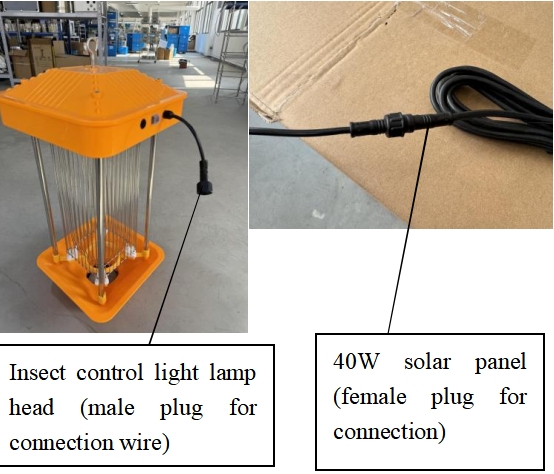
Forecasting lamp: monitors, counts, and uploads data; Killer lamp: focuses on physical elimination.
Generally 40–60 meters, varies by crop and terrain.
Yes, 40W panel still charges under diffuse light (reduced efficiency).
Stops automatically below 5°C, resumes when temperature rises; no damage.
Internal structure minimizes rainwater interference.
Safe under normal use with protective isolation; avoid direct contact.
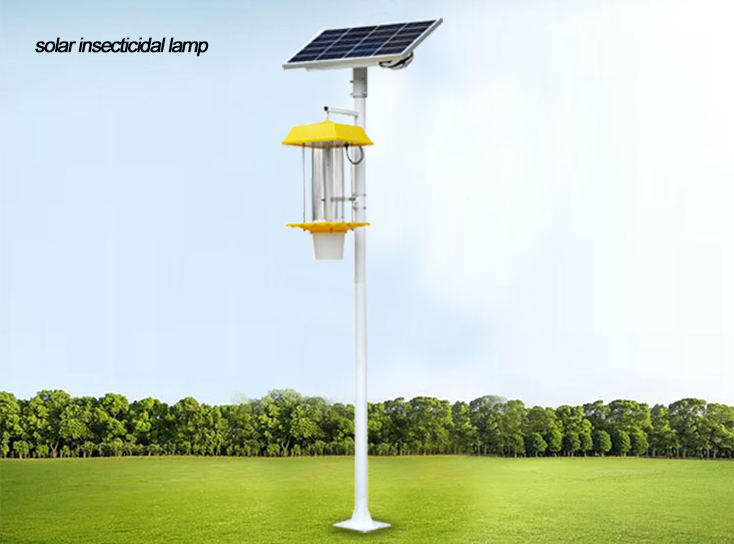
Every 1–2 years depending on trapping volume.
No, fully solar-powered.
Yes, NiuBoL forecasting lamps support RS485/wireless/cloud integration.
Once per week is sufficient; increase during peak seasons.
Not recommended — insects are most active at night.
Prevents arcing due to high humidity and extends equipment life.
CE, ISO9001, RoHS, and calibration certificates.
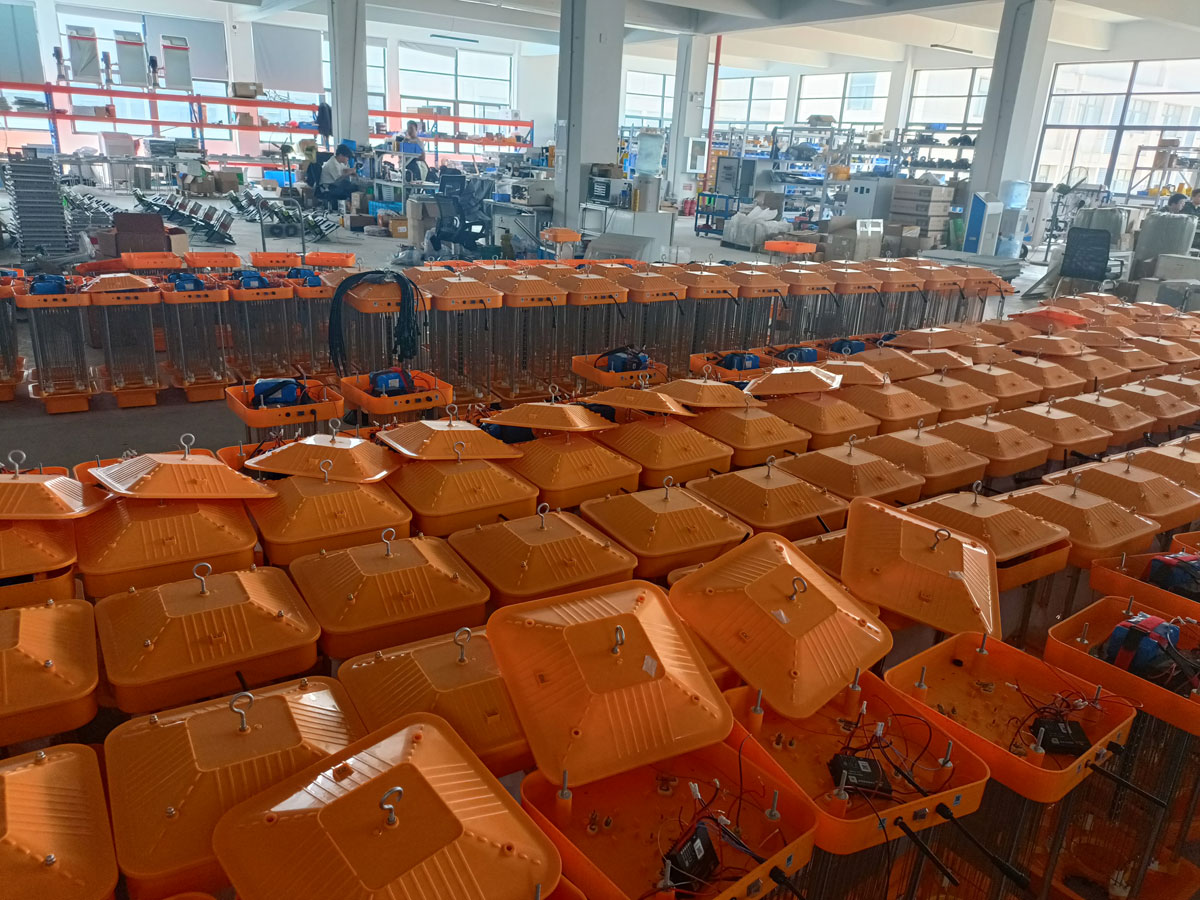
NiuBoL insect pest forecasting lamps and solar insect killer lamps, with precise monitoring, efficient trapping, intelligent control, and long-life solar power as core advantages, provide mature, field-proven solutions for green agricultural pest control. Whether for scientific monitoring, green prevention demonstration zones, or large-scale farming, these devices significantly reduce pest risk, minimize pesticide use, and improve crop yield and quality.
Related recommendations
Sensors & Weather Stations Catalog
Agriculture Sensors and Weather Stations Catalog-NiuBoL.pdf
Weather Stations Catalog-NiuBoL.pdf
Related products
 Combined air temperature and relative humidity sensor
Combined air temperature and relative humidity sensor Soil Moisture Temperature sensor for irrigation
Soil Moisture Temperature sensor for irrigation Soil pH sensor RS485 soil Testing instrument soil ph meter for agriculture
Soil pH sensor RS485 soil Testing instrument soil ph meter for agriculture Wind Speed sensor Output Modbus/RS485/Analog/0-5V/4-20mA
Wind Speed sensor Output Modbus/RS485/Analog/0-5V/4-20mA Tipping bucket rain gauge for weather monitoring auto rainfall sensor RS485/Outdoor/stainless steel
Tipping bucket rain gauge for weather monitoring auto rainfall sensor RS485/Outdoor/stainless steel Pyranometer Solar Radiation Sensor 4-20mA/RS485
Pyranometer Solar Radiation Sensor 4-20mA/RS485
Screenshot, WhatsApp to identify the QR code
WhatsApp number:+8615367865107
(Click on WhatsApp to copy and add friends)
